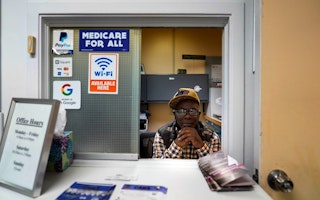Q&A: Is Addiction a Learning Disorder?

Maia Szalavitz drew on years of research, as well as her own battles with cocaine and heroin, in writing her new book, Unbroken Brain: A Revolutionary New Way of Understanding Addiction. Szalavitz, a 2015 Soros Justice Fellow, spoke to Thomas Watson, senior editorial advisor, about her work and what’s wrong with drug policy today.
Your new book argues that addiction is a learning disorder, as opposed to a brain disease or a criminal decision. What does this mean, in a nutshell?
Addiction is compulsive behavior that occurs despite negative consequences. This is the most widely accepted definition of the problem in medicine and psychiatry. However, policymakers and others haven’t really understood the implications of this. What it means is that, in essence, addiction is difficulty learning from punishment.
By recognizing the role of learning in addiction, we can better understand its sometimes paradoxical qualities. For example, people with addiction often look like they are deliberately planning their own self-destruction. But from our point of view, we are simply doing what we need to do to survive emotionally. We’re not zombies—we’re making choices, but those choices are biased in a way that is not obvious to people on the outside.
It’s similar to what you see when people fall in love: a person’s priorities change dramatically, and people may lie or hide certain behavior in order to protect the relationship. This doesn’t mean that people with addiction are inherently liars or manipulative, or that we have no free will. It’s just that we are under a type of stress that often pushes us to become self-protective in this way. It is critical for policymakers to understand this because it means that punitive treatment and punitive criminal justice policy are doomed to fail.
What are the biggest obstacles to advancing policies that treat addiction as a health care challenge rather than a criminal justice issue?
One huge obstacle is the way we see addiction, and how that view is rooted in our racist drug policies. To move forward, we need to understand that our laws are not based on science, but on bizarre, racist, and anti-immigrant campaigns of the 20th century.
These campaigns shape the way we see addiction even now. Every time you hear a white person saying, “I’m not your typical addict,” you hear the echo of the racism that originally drove drug prohibition. And every headline about heroin hitting the “middle class”—by which is meant white people of any class—has the same backdrop.
To recognize addiction as a learning problem—driven by self-medication to deal with trauma, mental illness, and other sources of despair—requires letting go of the idea that our drug laws are rational and accepting that they were made to control certain groups of people. That’s the only reason you can have alcohol and tobacco be legal while marijuana is illegal; no one can make a rational argument for that.
What I’m arguing is that we need to treat addiction like a real medical problem, not one that is uniquely moral. This will allow us to recognize that decriminalization of all personal drug possession, and complete legalization of some drugs, is the only policy that can genuinely help people with addiction while minimizing harm to everyone else.
What’s the most surprising thing you’ve learned about addiction and drug policy during the course of your fellowship?
That it is sometimes possible to have a rational discussion of these issues that actually changes people’s minds. For decades, the entire drug policy debate was stalled. Harm reduction was a fringe concept. And needle exchange was so stigmatized that President Clinton saw the need to block it in order to avoid the dreaded “soft on crime” label, even though the data was already crystal clear at the time that it saved lives and didn’t encourage drug use.
Now, we have USA Today endorsing safe injection facilities and the New York Times supporting marijuana legalization. Four states actually have legalized, and it’s increasingly difficult to find someone to quote who favors arresting and jailing users, or who opposes access to the overdose antidote naloxone on moral grounds.
Yes, it’s true that the “whiteness” of the opioid problem has helped move the debate, but so has the quiet, persistent work of thousands of harm reduction advocates who made compassionate treatment of people who use drugs an idea whose time has come.
